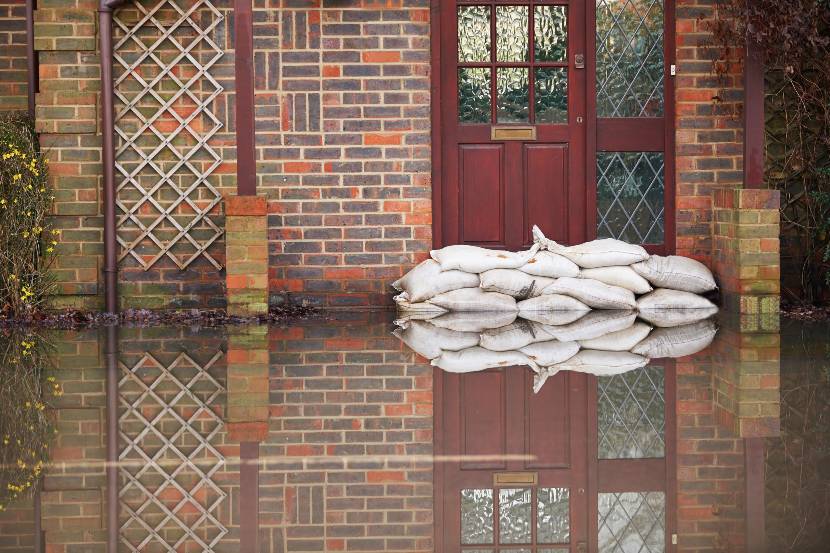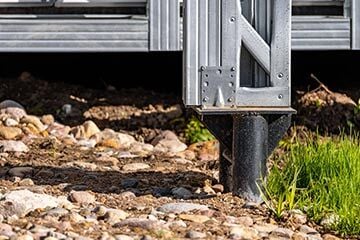Flood Re helps homeowners in high-risk flood areas access affordable flood insurance cover as part of their home contents and buildings insurance.
The scheme helps households with the highest risk of flood damage and offers advice on how to reduce this risk.
The good news is that it's due to continue until 2039. After this, home insurance companies may only offer policies based on the risk to your property.
Here’s everything you need to know about Flood Re.

Am I eligible for Flood Re?
Before diving in, it’s worth checking if Flood Re is an option for you. To qualify, you need to:
- Your home insurance policy must be in your name
- Your home must have been built before 1 January 2009
- The property must be in a council tax band
- The property must be used for residential purposes
You might not be eligible for Flood Re if:
- Your home was built after 1 January 2009 (this is to deter people from building on flood plains)
- You’re a buy-to-let landlord
- The property is leasehold
- The property is used for commercial purposes
- The home is based in the Channel Islands or the Isle of Man
Flood Re recommends using their qualify tool to check if you’re eligible. It's worth using this before you buy home insurance - but it doesn’t make a difference to the way you buy your policy. You'd also contact your insurer if you need to make a claim.
How do I get Flood Re insurance?
We can help you find Flood Re insurance. The scheme works alongisde your home insurance provider, so you don't have to get a quote for it separately.
If you’re getting a quote through us, we’ll ask you:
1. If the property is more than 400 metres from water. e.g. rivers, streams or the sea. 400m is about 4 football pitches long. If you’re within 200m of water, then your premium rises by over £50*.
2. If your property:
- Has never flooded
- Has flooded within the last 10 years. Your insurance price could rise by over £200* if your home has flooded in the last 10 years.
- Flooded over 10 years ago.
If you live in an area with high flood risk, we’ll show you a list of providers that offer Flood Re.
Your insurance provider should pass on the flood risk elements of your policy to Flood Re, so you shouldn't have to do anything.
Which home insurance providers take part in the Flood Re Scheme?
From the insurers we compare, the following take part in Flood Re:
- Admiral
- Ageas
- AXA
- Churchill
- Halifax
- John Lewis
- LV=
- More Than
- Nationwide
- Privilege
- Sainsbury's bank
- Swiftcover
This list is correct as of May 2025. There are more insurers that work with Flood Re, according to the Flood Re website - these are just the insurers that have Flood Re that we compare.
All home insurance providers pay into the Flood Re scheme through a levy, even if they don’t offer Flood Re cover. That’s what helps fund claims and keep the scheme running
How do I make a Flood Re claim?
If you want to make a claim for flooding, make a home insurance claim through your home insurer as you normally would. They'll process your claim and make any payouts you're owed. Flood Re then reimburses your insurer for the flood risk part of your claim.
Flood Re help for tenants
Flood Re covers both contents and buildings. So, if you're a renter living in a flood risk area, it could be worthwhile.
Flood Re can even help make your contents insurance cheaper by providing additional protection against flood damage.
It’s worth checking with your landlord if they’ve got appropriate buildings insurance in place. It might include help with rehousing costs after a flood.
What is the Build Back Better initiative?
Build Back Better is a scheme that provides up to £10,000 worth of flood defences to homeowners when repairing a property after a flood.
Flood Re created the scheme to reduce the cost and impact of future floods on houses across the UK. Any grants made through this scheme could be on top of any money you get from a flood claim.
The Build Back Better initiative includes Property Resilience Measures as part of the flood repairs. These can often include:
-
Installing self-closing air bricks
-
Raising electrical sockets from floor level
-
Replacing flooring with waterproof tiling and grout
-
Installing flood-resistant doors
The aim is to make the process of rebuilding and cleaning up after a flood easier, quicker and safer for homeowners. So if you're affected by flooding, you can get back to normal life as soon as possible.
Not all insurers are part of the Build Back Better initiative. So, it's worth checking before you buy a policy if you think this scheme would work for you.







